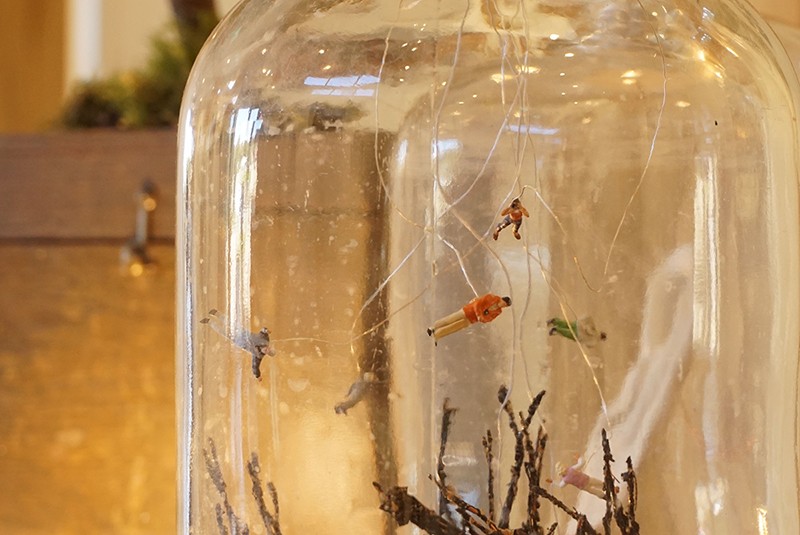Project

The Hand Also Has Dreams - Karen Lorenz and Philip Pierce
An exhibition that brings together the work of two artists, working in different media, working with very different approaches, can come about for different reasons. These can be pragmatic reasons of sharing labour, cutting costs or energy, or they may reflect a shared studio or practice. In the case of ‘The Hand Also Has Dreams’ on first entering the space, it feels like these works are oddly paired, and share little formally, in terms of media, or in modes of making. As the viewer spends time with them these works begin to speak to and of each other more. On initial viewing the visitor is presented with a collection of photographs by Philip Pierce that might casually appear as tourist snapshots and oddly framed architectural details, and Karen Lorenz’s work mixes abstract and near abstract paintings and drawing with two sculptural works that incorporate moving image. With time, questions of formal composition, of motifs, of processes in both bodies of work open up a dialogue or a possibility for parallels in thinking.
Video
The Eye, Video installation
The video animation is part of a piece called The Eye (2017) an assemblage made from the Compact Edition of the Oxford English Dictionary (part 1&2), a magnifying glass and a small two inch monitor. The weighty dictionary, protected by a slipcase, has seen better days. In the past a book with such impressive binding and the guilded letters must have radiated a kind of fresh and knowledgable authority, a time when separation, close scrutiny and analysis prevailed.
Underneath the slipcase is a small compartment usually reserved for a magnifying glass. The screen is nesting inside that little drawer which is open, and it reveals the black and white video stop-frame animation. The piece and the animation was inspired by Fritjof Capra’s Tao of Physics. He speaks about the parallels between physics and eastern mysticism, oneness and the interconnectedness of all life.
Like Eastern mysticism, quantum physics discovered a different kind of knowledge, which is not an edifice but an organism in process of evolution. Indeed any phenomena is a process and only ever temporarily static.
Stop frame animation seemed like the perfect medium to explore this idea. After all we are looking at a sequence of static images unfolding in quick succession. We perceive movement.
The magnifying glass emphasises the role of the observer. It is a participatory universe after all.


























